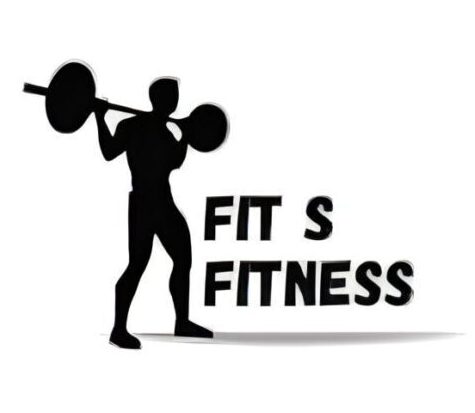Introduction
Embarking on a fitness journey is an exciting and transformative experience. Whether you’re aiming to lose weight, build muscle, improve athletic performance, or enhance overall well-being, it is essential to track your progress along the way. Tracking fitness metrics not only allows you to monitor your achievements but also provides valuable insights into your body’s response to exercise and lifestyle changes. In this article, we will explore the importance of tracking fitness metrics and discuss key metrics that matter. So, let’s dive in and discover how measuring fitness success can lead to greater achievements!

Why Tracking Fitness Metrics is Important
Tracking fitness metrics is crucial for several reasons. Firstly, it provides tangible evidence of your progress and acts as a source of motivation. Seeing improvements in various metrics can boost confidence and encourage you to stay committed to your fitness goals. Additionally, tracking allows you to identify areas of improvement and make necessary adjustments to your workout routine or lifestyle habits. By monitoring your metrics, you can ensure that you are on the right track toward achieving your desired outcomes.
Key Fitness Metrics to Track
When it comes to tracking fitness metrics, there are several key areas to consider. Here are nine metrics that matter:
1. Body Composition
The ratio of your body’s lean mass to fat mass is referred to as body composition. Tracking changes in body composition, such as body fat percentage and muscle mass, can provide valuable insights into the effectiveness of your exercise and nutrition regimen. It allows you to monitor fat loss, muscle gain, and overall body transformation.
2. Strength and Endurance
Strength and endurance metrics measure your physical capabilities and progress in terms of lifting weights, performing bodyweight exercises, or completing endurance activities such as running or cycling. Tracking improvements in strength and endurance can help you set and achieve new personal records and push your limits.
3. Cardiovascular Health
Cardiovascular health metrics, such as heart rate and VO2 max (maximum oxygen consumption), reflect the efficiency of your cardiovascular system. Monitoring these metrics can help you gauge your cardiovascular fitness level and track improvements in aerobic capacity over time.
4. Flexibility and Mobility
Flexibility and mobility metrics assess your range of motion and joint mobility. Tracking improvements in flexibility can help prevent injuries, enhance performance, and ensure overall musculoskeletal health.
5. Resting Heart Rate
The number of times your heart beats per minute while you are at rest is known as your resting heart rate (RHR). A lower RHR is generally indicative of better cardiovascular health and fitness. By tracking your RHR, you can monitor changes in your cardiovascular fitness level and overall well-being.
6. Blood Pressure
Tracking your blood pressure can provide insights into your cardiovascular health and risk of developing conditions such as hypertension. Regular monitoring helps identify any abnormalities and allows you to take the necessary measures to maintain optimal blood pressure levels.
7. Sleep Quality
A good night’s sleep is crucial for general health and well-being. Tracking metrics such as sleep duration, sleep efficiency, and sleep stages can help you assess the quality of your sleep and make adjustments to improve your sleep habits.
8. Mental Well-being
Physical fitness is important, but mental health is just as important. Tracking metrics related to mental health, such as stress levels, mood, and anxiety, can help you understand the impact of exercise and lifestyle changes on your mental well-being.
9. Energy Levels
Monitoring your energy levels throughout the day can provide insights into how well your body is adapting to your fitness routine and lifestyle changes. Tracking energy levels can help you identify patterns and make adjustments to optimize your energy levels for better performance and overall well-being.

How to Track Fitness Metrics
Now that we have discussed the key fitness metrics to track let’s explore how to effectively monitor and measure these metrics. Here are four common methods:
1. Body Measurements
Tracking body measurements, such as weight, waist circumference, and body fat percentage, can be done using a scale, measuring tape, or body composition analyzer. Regularly measure and record these metrics to assess changes in body composition.
2. Performance Tracking
For metrics related to strength, endurance, and cardiovascular fitness, keep a record of your workout performance. Note down the weights lifted, repetitions completed, distances covered, or time taken to complete specific exercises or activities. This allows you to track progress and set new goals.
3. Wearable Devices and Apps
Wearable devices, such as fitness trackers and smartwatches, offer convenient ways to track various fitness metrics. These devices can monitor heart rate, steps taken, calories burned, sleep quality, and more. Mobile apps also provide features to track and analyze fitness data.
4. Fitness Journals
Keeping a fitness journal allows you to record and track multiple fitness metrics in one place. It provides a holistic view of your progress and helps identify patterns or trends over time. Use the journal to note down workouts, nutrition, sleep, mood, and other relevant information.

Setting Realistic Goals and Progress Tracking
When tracking fitness metrics, it is essential to set realistic and specific goals. Define what success means to you and establish clear objectives for each metric you are tracking. Break down your goals into smaller milestones and regularly track your progress toward achieving them. Adjust your goals and strategies as needed based on the insights gained from tracking your metrics.
The Benefits of Tracking Fitness Metrics
Tracking fitness metrics offers several benefits beyond monitoring progress. It helps you stay accountable, provides motivation, and allows you to celebrate achievements along the way. Additionally, tracking metrics can help you identify areas for improvement, optimize your workout routine, and make informed decisions about your fitness journey. It also serves as a valuable tool for communication with fitness professionals, enabling them to provide personalized guidance based on your metrics.
Conclusion
Tracking fitness metrics is an essential component of any successful fitness journey. By monitoring key metrics related to body composition, strength, endurance, cardiovascular health, flexibility, and more, you can gain valuable insights into your progress and make informed decisions to optimize your fitness routine. Whether you choose to use wearable devices, fitness journals, or a combination of methods, regular tracking allows you to set realistic goals, stay motivated, and achieve greater success in your fitness endeavors. So, start measuring your fitness success today and unlock your full potential!




